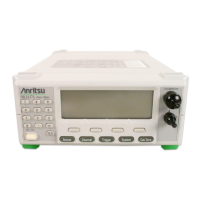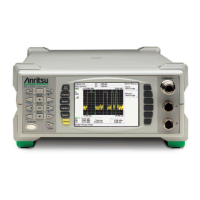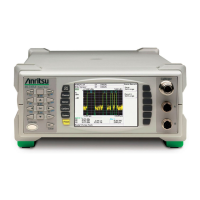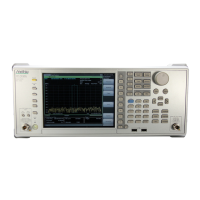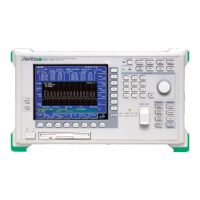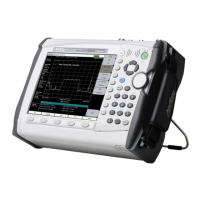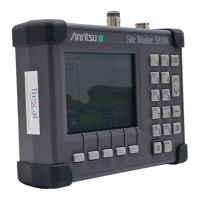Chapter 2
Installation
2-1
INTRODUCTION
This chapter provides information for the initial inspection and preparation
for use of the ML2400A Series Power Meter. Shipping and storage informa-
tion is also included.
2-2
INITIAL
INSPECTION
Inspect the shipping container for damage. If the container or cushioning ma-
terial is damaged, retain until the contents of the shipment have been
checked against the packing list and the instrument has been checked for me-
chanical and electrical operation.
If the power meter is damaged mechanically, notify your local sales represen-
tative or Anritsu Customer Service Center. If either the shipping container is
damaged or the cushioning material shows signs of stress, notify the carrier
as well as Anritsu. Retain the shipping materials for the carrier's inspection.
2-3
SENSOR
HANDLING
The sensors are enclosed in a polycarbonate case to help prevent damage.
The sensor connectors, however, are exposed and are a critical part of the mi-
crowave instrument. Refer to the MA24XXA Series Power Sensor manual
(10585-00004) for detailed information on proper connector care.
2-4
POWER
REQUIREMENTS
The ML2400A Series Power Meter can be operated from either AC line
power, external DC power, or from the optional internal battery. The
ML2400A Series Power Meter is intended as an Installation (Overvoltage)
Category II, Insulation Category I device.
At power-on, the power meter will perform a brief power-on self test (POST).
If a POST error occurs, information and available options will be displayed on
the screen (See Chapter 4, page 4-3). If the POST is successful, the instru-
ment will load the last used configuration, unless Secure mode has been se-
lected (see Chapter 4, page 4-35, or Chapter 6, page 6-70).
AC Line
Power
The ML2400A Series Power Meter can operate on
AC input power of 85-264V, 50-440 Hz, 40 VA maxi-
mum. The Power Meter automatically configures it-
self for the voltage applied. The AC line input is
protected by an internal fuse.
ML2400A OM 2-1
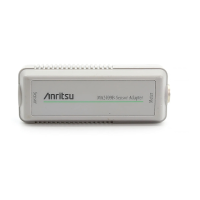
